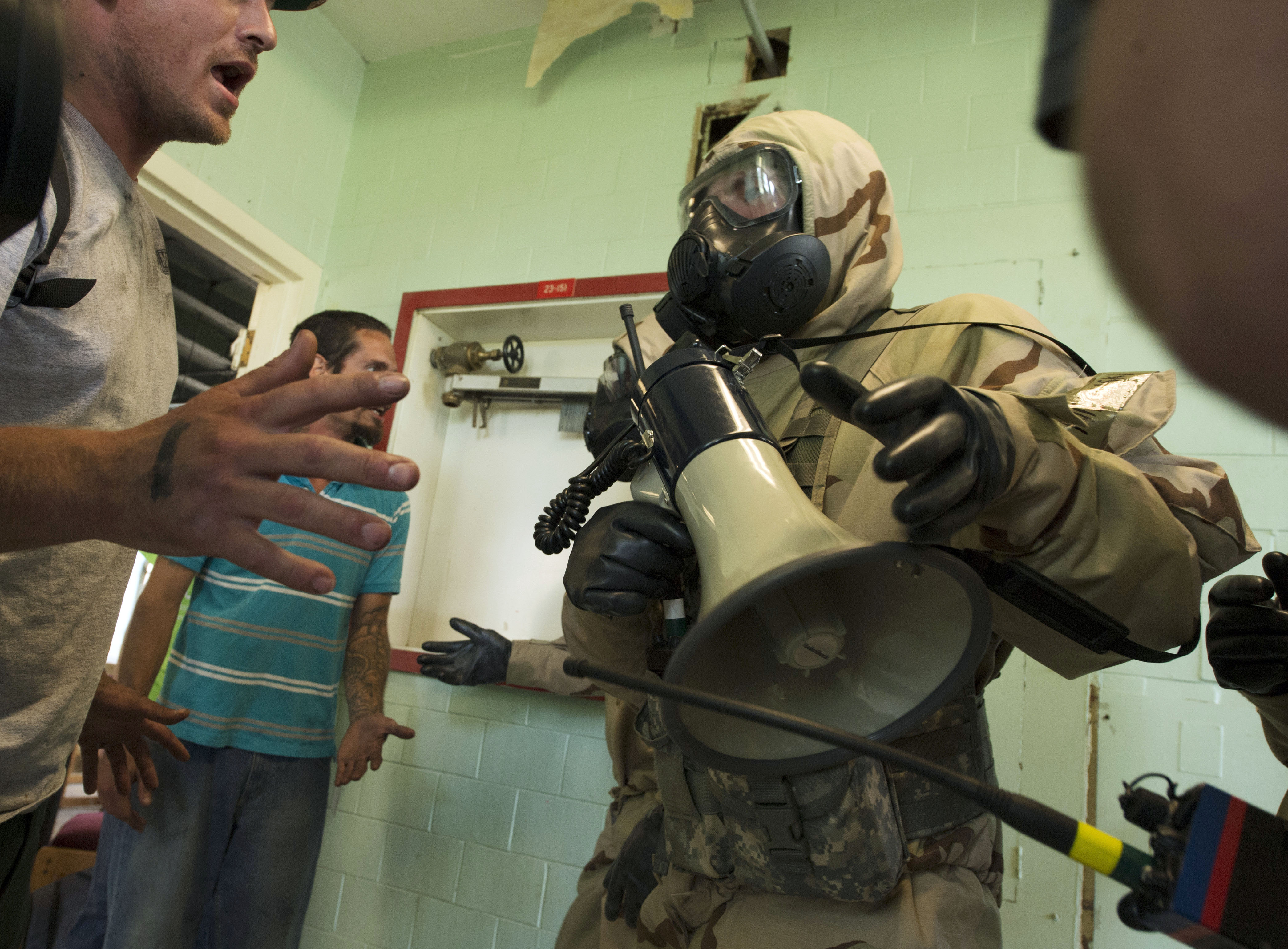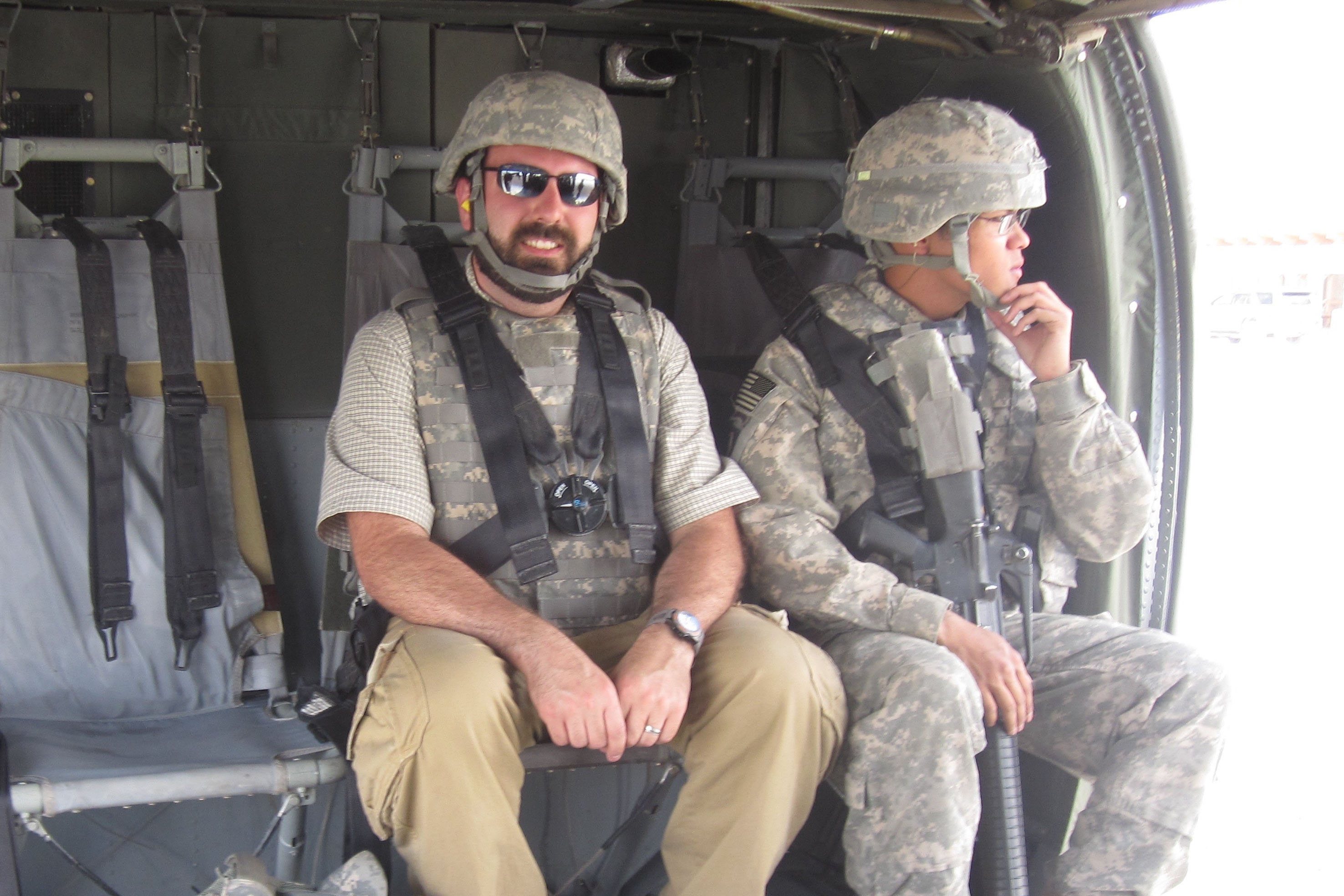
Ms. Nancy Jones-Bonbrest
Taking an idea from paper to operational assessment can be a lengthy and costly endeavor. Now, the Army Rapid Capabilities Office (RCO) is offering a middle ground that could speed up the process of getting prototypes to the field.
In March 2017, RCO began a series of “burn-off” events as a way of demonstrating whether a promising new technology works and if it is mature enough to close important capability gaps in areas that include electronic warfare and alternative position, navigation and timing (PNT).
“We get white papers on new technologies all the time,” said Rob Monto, head of RCO’s Emerging Technologies Office (ETO). “The burn-offs are really to get hands-on and see how well they potentially could perform in support of the next phase. It’s that operational feedback that we are after: Does it perform the way it says on paper, and what do the Soldiers think of it?”
The burn-off brings together commercial capabilities in an operational demonstration to size them up against a set of criteria and determine if the Army can use a new technology—either by itself or in combination with existing technology—to meet a specific need. For industry, the events provide a chance to showcase capabilities and receive formal and informal feedback. For the Army, they yield a greater awareness of what promising new technology is available now and how it performs.
Burn-offs provide an opportunity for industry to see how its proposed technology performs in an operational environment without the do-or-die atmosphere of a formal test. The process starts with the Army issuing a request for information (RFI) soliciting proposals in a specific technology area. Companies with proposals of interest are then invited to participate in the burn-off, which takes place at a test range or training center environment, for example. Each vendor has the opportunity to demonstrate its capability against a specific operational scenario. Afterward, the participants can receive an individualized report on their performance, and the Army is better positioned to judge how close—or how far—a proposed technology is from meeting an operational need.

ON-SITE APPRAISAL
Rob Monto, left, now head of RCO’s Emerging Technologies Office, in Afghanistan in May 2011 when he was with PM Battle Command (now PM Mission Command). He was there fielding kit and piloting enhanced capabilities. (U.S. Army photo)
For example, last year RCO participated in a burn-off led by the Army’s Rapid Equipping Force (REF) to assess dismounted electronic warfare systems. The exercise, which took place at Yuma Proving Ground, Arizona, assessed different capabilities against a series of set threats. The data shared from that event helped mature and advance electronic warfare prototypes that RCO moved forward to field in Europe beginning in January 2018.
“With burn-offs, we’ll be able to determine if the technology is tangible now,” Monto said. “We’ll demonstrate it and see how well it works. For industry, this could potentially lead to additional demonstrations, prototyping and, if [the technology is] mature enough, limited production opportunities. Most importantly, it’s a way to find solutions to capability gaps faster, by placing small bets in several different technology areas. It may only be a 70 or 80 percent solution, but it meets an urgent need, while helping to inform long-term programs in the months or years to come.”
This year RCO is participating in several burn-offs. The first came in March, when RCO partnered with the REF and the Project Manager (PM) for Electronic Warfare and Cyber on a burn-off at Yuma Proving Ground. This event assessed immediate, short-term and long-term capabilities for mounted, tactical electronic warfare systems that can provide electronic support and attack capabilities to enable freedom of maneuver in the electromagnetic spectrum.
Also in March, RCO teamed up with the U.S. Special Operations Command (SOCOM) to examine alternative PNT capabilities at the Muscatatuck Urban Training Center in Indiana. RCO led the PNT portion of the SOCOM event to demonstrate non-GPS solutions in an operational environment. This environment includes open, forested and urban terrains, as well as day and night operations in multiple weather scenarios.
Later in the year, RCO will hold additional burn-off-type events, to look at artificial intelligence for electronic warfare and at aerial electronic support and electronic attack capability.
When the Army finds that a capability, or the performance of a specific system, is exceptional compared with the rest of the industry, there may be an opportunity to quickly procure and deploy a minimal number of those systems to address operational needs. By participating in the burn-offs, industry partners also gain an awareness of their systems’ strengths and limitations vis-à-vis Army requirements, enabling them to better focus their investments of internal research and development funding.

CHALLENGES OF THE URBAN ENVIRONMENT
Civilian role players feign frustration toward U.S. Soldiers assigned to Joint Task Force Civil Support during a field training exercise in 2014 at Muscatatuck Urban Training Center. In March, RCO teamed up with SOCOM to examine alternative PNT capabilities at the urban training center. Navigation in a dense urban environment, where GPS might be jammed or harder to access, presents new technical challenges that RCO is trying to solve. (U.S. Air Force photo by Master Sgt. Barry Loo, SOCOM)
“The burn-offs support a new concept we are evolving this year,” said Douglas K. Wiltsie, director of RCO. “What we want to be able to do is address a capability gap in terms of: Decompose the problem, engineer the problem and see if there’s technology that will allow us to get started very, very quickly. The intent is to put the problem out there and find the best of breed that is available today, and move out.”
For more information, go to http://rapidcapabilitiesoffice.army.mil or follow RCO at https://www.linkedin.com/company/us-army-RCO.
This article is published in the April – June 2018 issue of Army AL&T magazine.
Subscribe to Army AL&T News, the premier online news source for the Acquisition, Logistics, and Technology (AL&T) Workforce.







